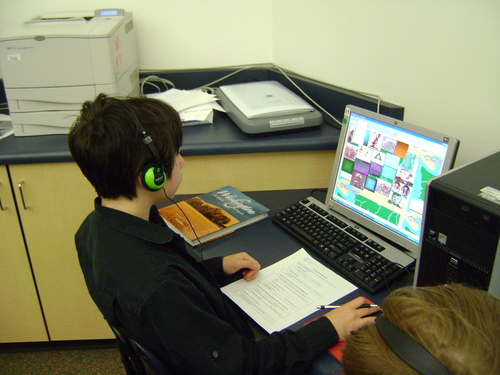I believe that there are three critical technologies that should be embraced by educators in the new year The first one is to create a personal learning network (PLN) online by joining social networks such as Twitter and sharing resources. The second is to create a social network for your classroom. Back in September I wrote about the social networking site Edmodo, which turned out be one of the most transformational technology activities I did with my students last year. You can check out that post here. The third and final tool that I believe is foundational to any 21st century classroom is screencasting. Screencasting is a method of recording the actions of your computer along with an audio track of your voice explaining what you are showing on the screen. I have been screencasting for a couple of years now, and found it to be a great way to show students how to do something on the computer. I would often use a screencast before taking my students to the lab, so that they could see what we were going to do in the lab. Here's an example: [youtube http://www.youtube.com/watch?v=UFpndtuitNk?wmode=transparent] I would upload my screencasts to a YouTube channel (www.youtube.com/mrtalmadge) which then automatically showed up in an embedded player on my class website (www.mrtalmadge.com). It was really nice in the lab because the students could be working at their computers and they could refer to my screencast if they couldn’t remember how to accomplish the task. Essentially, it allowed me to “replicate” myself so that I could give more personal attention to those students who needed it while the other more capable students could refer to the screencast if they needed assistance.
However, using screencasting to create tutorials is just the beginning. The most powerful use of screencasting occurs when you allow your students to create their own casts. Isn’t that the case with most technology? It’s about allowing the students to be creative and use technology to show what they know and can do. I’ll never forget the buzz in the lab as my students began recording themselves (and rerecording themselves again and again). One student must have redone his screencast 20 times because he wanted it to be just right. That is the beauty of screencasting, you can have as many chances as you need until the quality of your presentation is what you want it to be. Of course, there is some prep work involved. As the teacher you still have to provide your students with some structure, such as a planning tool for them to script out what they want to say, as well as teaching them the “how to’s” of the specific web application that you choose to use.
For my project last year, I chose to use http://screencastomatic.com. In fact, if you look at the bottom of their home page, you can see where the creator of the site has included one of my student’s projects as an example to illustrate the uses of screencasting. Here's the one that is included: [youtube http://www.youtube.com/watch?v=9rPXjv1ab3Q?wmode=transparent] I was very excited when I noticed this a few weeks ago! One of the main reason I chose screencastomatic was that it allows you to create a “channel” on the site so that you can give the students the link to the channel and they can simply record their presentation right onto the channel page so that you've got a list organized chronologically. You can check out all of my students work on the channel here.
There are many screencasting tools available to use for fee online (screentoaster, screenr and jing are three that come to mind right now) as well as other more costly traditional software programs (Camtasia comes to mind). But it’s not so much about which program or app you choose to use, just that you try it out, both as a teaching/presentation tool and as a learning tool for students.
How about you? Do you have other ideas about technology tools teachers should try in the new year? How have you used screencasting in the classroom? Do you have a screencasting program that you prefer over another? If so, why?
